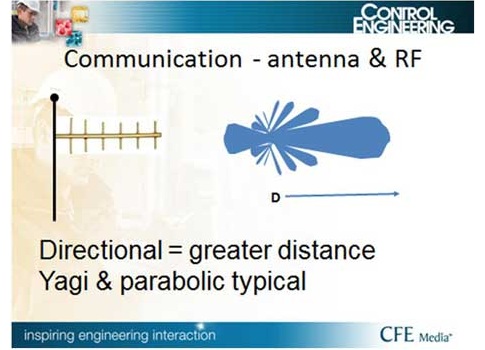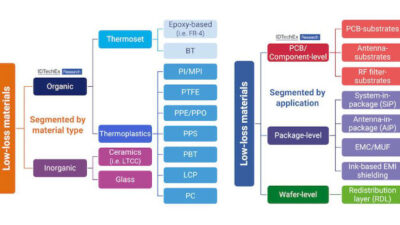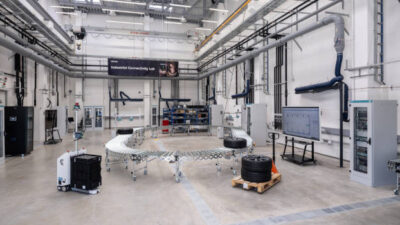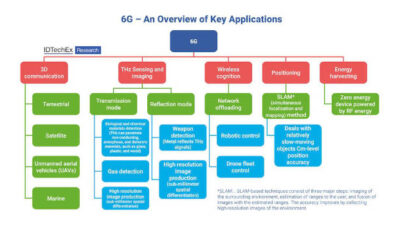More wireless technology tips and answers follow, resulting from feedback and questions submitted during a Control Engineering wireless webcast.

Editor’s note: Control Engineering Wireless Webcast included Stephen Muenstermann, RoviSys Building Technologies, DC market manager, who presented his information as scheduled on March 14 (archived thereafter) despite suffering from flu. The article linked below in Adobe PDF format corresponds to the webcast presentation and provides additional information, with apologies from Muenstermann, who was severely under the weather for the webcast but went “on with the show” anyway. The linked PDF includes expanded presentation and application advice beneath each wireless webcast slide. Additionally, questions from webcast registrants and his answers to the questions are provided below.
Muenstermann offered the following answers to these questions to his portion of the Control Engineering wireless webcast.
Q&A Control Engineering wireless webcast
What are important performance metrics of wireless networks?
Top 5 performance metrics for wireless networks are radio signal strength indication, packet delivery, signal-to-noise ratio, receivers’ sensitivity, and line of sight. More information on each follows.
Wireless network metrics:
- RSSI – Radio Signal Strength Indication – How strong is the receive signal
- Packet Delivery – This indicates that that your message was sent and received. Typically greater than 50% is solid as the data is spread out across a spectrum.
- SNR – Signal to Noise Ratio – which is the power ratio between the signal (meaningful information) and the background noise (unwanted signal)
- Receivers’ sensitivity – a negative number -83dBm or greater is common. The more negative, the better sensitivity. Every time your receiver sensitivity drops by a factor of -3, it makes its ability to hear the incoming signal two times greater.
- LOS (line of site) – what this means is the distance the two radio frequency (RF) transceivers can visibly see each other without obstruction. This is more important when trying to shoot through walls, trees, canyons of steel, etc.
- Diversity – In many of these technologies they have what they call multipathing. That is where the same signal bounces off a metal wall and comes in slightly later. Most systems have great diversity.
- Determinism – Is the signal/network deterministic? This assures that you only get the data you want from each location.
- Encryption and authentication – These are security measures. The first refers to the RF in the cloud, the second refers to how it becomes recognized into the network.
Get testimonials from clients using the technologies you are evaluating.
After you become more familiar with RF you will find that it will be easy to pick and choose. About 70% of the problems I have seen in the field have been related to mounting practices of the radios or antennas. Fortunately, this can be easily fixed by moving either item around.
What is an IT wireless network?
The real important part is the network side of it. That is what we are forming connections with wireless. We can create multiple layers with multiple stacks, while exchanging copious amounts of information. Information technology (IT) is used as we are exchanging, storing, manipulating, retrieving, and transmitting data.
One transmitter?
Would multiple signals go through a single transmitter?
All sensor networks have unique points. Most of the “standard” sensor networks are designed to send multiple signals through a single transmitter. This mesh style network is to prevent a single point of failure and to be self-healing. So the short answer is: yes!
Did anything ever come of OCARI wireless?
OCARI (Optimization of Communication for Ad hoc Reliable Industrial network) has not yet been used in the United States, so I am only familiar with it by what I have studied since the standard started in 2010.
By its design it looks fairly solid. It’s late to the party on standards and probably hasn’t grabbed acceptance yet. It was developed mostly by the French, so it may take a while for it to grab broader acceptance simply do to the momentum of the other standards and that they are not in the heart of heavy industrial applications. Only time will tell.
What about designing RF links for facilities overseas, what advice do you have?
Many of the challenges overseas are the limitations of what is accepted by the country in which you are working. The 2.4 GHz band has been the most widely accepted because of the microwave oven. A typical microwave oven leaks about 1 W or more of RF energy. As a result, most countries have opened that frequency spectrum to allow people the ability to cook food (and popcorn) quickly.
In doing so it opened up a vast number of technologies in that spectrum from cordless phones, Wi-Fi, to WirelessHART, ZigBee, ISA100.11a, and others.
So my advice is stick with 2.4 GHz but be cautious of your power output and check the local limits. The last network I did in Finland only allowed for 280 mW radio output and 350 mW of ERP (effective radiated power). In the USA we can generate as much as 1 W from the radio and 4 W of ERP. (The ERP is related to what the antenna adds to the radio output power.)
Testing for wireless network health
You mentioned many wireless technologies. Since we are dealing with heterogeneous sensor networks deployment, have you thought of how to address remote testing of the performance and health of these sensors and sensor networks?
This is where the standards protect you most. The IEEE is pretty hard on what they will accept. And most manufacturers do not want to create radio networks that will fail. So these technologies are built with what the call anti-collision technology. So if they sense someone climbing into their specific spot in the frequency, they will divert the other direction. They keep a list of multiple nodes in their memory so they can jump to another node if the signals become too interruptive.
In understanding how a radio works, look at a cell phone. We have millions of people talking here in Chicago simultaneously with little or no interruption. So what the radios do is locate the cell that has the cleanest signal-to-noise ratio and links with that cell. It avoids the other cells even though the signal strength may be better.
From a heterogeneous standpoint: That is why you want to manage those networks, antennas, RF propagation, radio placement, and power output.
The radio receiver would be the most likely to fail if blasted with RF over numerous years. But, then again, the cost of a radio replacement is very cheap.
See additional industrial wireless Q&A, next page.
Wireless application questions
What radio technology was used for the wireless vibration applications mentioned? Are transceivers being used versus strictly transmitters from end devices?
With vibration testing, I have used both 900 MHz and 2.4 GHz technologies. ISA and HART standards use 2.4 GHz.
On the transceiver question, all the radios in a network are transceivers. They operate in a poll response fashion in their configuration, and when they do not, they give the proper response. So they are asked a question (receiver) and then sent their message (transmitter). Devices that act as nodes receive and transmit.
What is FEL?
FEL stands for front end loading.
When engineering a project (past proof of concept), FEL determines project details before starting the project itself. FEL balances risk over the cost of the project. If the cost is too high, you cannot implement unless the risks are resolved. Wireless can help mitigate risk.
Can wireless technology be applied to ESD procedure?
I am assuming that you are talking about static discharge from items located in the atmosphere. Or maybe asking if wireless devices shed static outputs? Hopefully one of these will answer your question:
- Most of these units are intrinsically safe, which means they are incapable of holding enough energy to produce a spark.
- The RF output is so significantly low that I have used more than 700 of these in a data center in Atlanta with absolutely no issues, and they have been there 10 years to date.
- I have installed 70 of these transmitters in a contained area in a nuclear facility. In testing, prior to installation, we found that they succumb to potential radiation failure after approximately 4 years. So the client put them on a 2-year replacement cycle.
- I have installed them in a refinery in California because the traditional wired sensors used were failing due to ambient static discharge and lightening issues.
Emergency shutdown
The ESD I meant stands for emergency shutdown. Normally we do this function with wired technology (no software routines).
I agree. I do not expect this technology to ever be accepted for ESD in my lifetime. That is too critical for wireless.
[Editor’s note: Separately, Control Engineering machine safety blog has raised questions about wireless safety-related applications. See “Machine safety: Can hand-held devices play a role?” and “Machine safety and wireless devices.”]
What technologies are used in various markets?
Many wireless and sensor technologies serve different purposes.
Wi-Fi most certainly has the largest exposure. On the sensor technology there are tens to hundreds of thousands in each category. Is there one dominant wireless standard? The answer is: not yet.
Related Control Engineering articles:
Industrial wireless market booming, but still underutilized
Research: Wireless use in industry
See additional industrial wireless Q&A and more links to additional wireless information, next page.
How about antennas with different frequencies?
What if antennas are handling different frequencies and modulations?
Antennas are cut or built to specific frequencies. They do not care about modulations.
Take your HDTV public signal: the same aerial antenna that you used with your old analog TV would work just fine. (The reason rabbit ears do not work as well is because the signal being transmitted is being transmitted horizontally and is extremely crisp. Rabbit ears are really designed for vertically RF transmitted signals.)
What are the main problems or challenges of wireless for industrial controls?
The two biggest challenges for applying wireless to industrial controls today are:
- Speed of response. If it is battery powered, you can only operate as fast as 1 second updates. This is not good for fast control like flow, but is usually okay for most level applications.
- Acceptance.
I have had many engineers use this technology for control. I have set up numerous SCADA [supervisory control and data acquisition] applications that are totally wireless dependent.
Free of cables? What about batteries? Reliability?
Are wireless field instrumentation devices completely free of cable? What about battery replacement and battery faults? Which is the normal life of the battery for a sensor for a fast process? What about interference over time in an ever-changing plant environment?
Radios typically use very little power. So here is where sensor technology comes into play.
Most sensors that are wireless independent will send out a warning sign prior to failure. But the speed and life of the battery is usually the field sensor issue and not the radio. The ISA100.11a and WirelessHART protocols have specifications that define the speed capabilities. Currently the fastest is 1 second for both. However, most manufacturer specs cannot achieve battery life greater than 3-5 years at that point. The longer you extend the sample rate, the longer your battery life will last. Many claim as long as 10 years for both.
My job is not to convince anyone of the technology but only to inform. As an engineer you need to evaluate the risks and make your own decisions on what is best for your facility. Being skeptical of a technology is a good thing as it will help you clearly evaluate what would be the next best move for your plant.
But I would like to mention something that may offer a window into the future and what a facility will look like in 10 years. Wireless technologies are very new to the industrial world. Wi-Fi (802.11) has only been released since 1997. In less than 10 years, it has become a common platform in almost every business sector, hotel, restaurant, etc. The technology has grown from its first release of IEEE 802.11a, which was solid and secure, to what we have today, which is IEEE 802.11, more than twice as fast, and many are convinced it is more reliable and secure than their Ethernet (CAT 5 Hardwire) network.
Moore’s law tells us that technology doubles every two years. So it is known that this technology will only improve with time. Technicians and engineers going through industrial engineering schools are already learning wireless technology. What you will see in the future is that your networks will be managed internally by extremely competent staff members. The need for a survey will not be necessary as the staff members will have their networks mapped out with a very specific strategy. The radio sets will only grow more robust in the future with forward and reverse capabilities for migration, and will take every element that you are concerned about into consideration.
Wireless will never take over every aspect of control or monitoring in a facility. It will probably never be used for any level of safety system or critical control. RF noise levels can easily be controlled in a facility and equally coexist with any changes from telecommunications systems at a neighboring plant today if properly installed initially without further changes. That is why I suggest that if you make your first move into this technology, it is always best to seek the wisdom of a group that can properly map out and plan your strategy.
Compare it to pneumatics over 4-20 mA wired technology. In the late 1980s, there were still many plants that had not adopted this technology, except in a few small areas due to skepticism, at an extremely high cost to their facilities. They continued to manage and maintain complex pneumatic systems riddled with moisture, leaks, and numerous other issues. But even those that did convert still use pneumatics throughout their facility in places that 4-20 mA or smart technology will never replace control valves.
A curiosity for learning new technology is a very good thing. This way, if and when you do decide to move forward, you will have all the proper information you need to build the right wireless strategy that offers significant cost savings to your plant while allowing no risk to currently well-managed wired application.
Many thanks
I appreciate all the feedback and questions. I also apologize for being less than dynamic in the presentation due to a bad flu bug. That is certainly not my normal performance.
– Stephen Muenstermann is RoviSys Building Technologies DC market manager. Edited by Mark T. Hoske, content manager, CFE Media, Control Engineering, [email protected].
See also, related PDF from Muenstermann’s part of the webcast, “Wireless technology tips from Control Engineering wireless webcast” in the webcast archive.
Also see www.controleng.com/wireless for additional information about industrial wireless.



